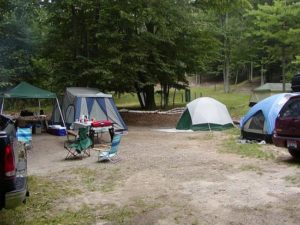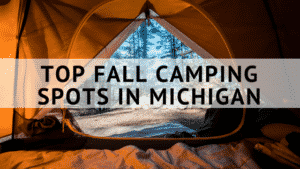
State Parks
- State parks require a reservation, which can now be done online. Additionally, you can normally handpick which site you’d like to stay at.
- Generally, state parks are more crowded, especially on holiday weekends.
- State parks provide many amenities such as water, electrical hookups, and bathrooms.
- Additionally, they have more organized activities, particularly for kids.
- Front houses are normally staffed until 11 PM at night, with rangers always around for assistance.
- State parks tend to have larger sites that accommodate trailers or 5th wheels.
- Located in convenient areas around the state and nearby larger lakes and landmarks, such as the sand dunes of Ludington, Higgins Lake and Tahquamenon Falls.
- Sites are usually closer together and have less privacy.
- State parks are commonly located along more bikeable trails.
State Forest Campgrounds
- State forest campgrounds do not take reservations; they are first come first serve. In other words, you could show up at a full one on a Friday evening…
- Paying is with check or cash only, which will be inserted into a protected canister after registering at the front of the campground.
- Campgrounds are not staffed, a ranger will normally come through once in the course of a few days to collect money and check site stubs.
- State forest campgrounds are generally sparsely populated, with some exceptions depending on the time of year.
- The grounds have no electricity and bathrooms are outhouses.
- Water at state forest campgrounds is available through a one hand well.
- State forest campgrounds have smaller sites, ideal for tents or pop-ups.
- The sites have more privacy because there is a larger buffer between them.
- Campgrounds are usually located in harder to get to places and many are only accessible via dirt roads.
Hopefully, this helps you determine which type of campground you would like to stay at this summer. Enjoy!

